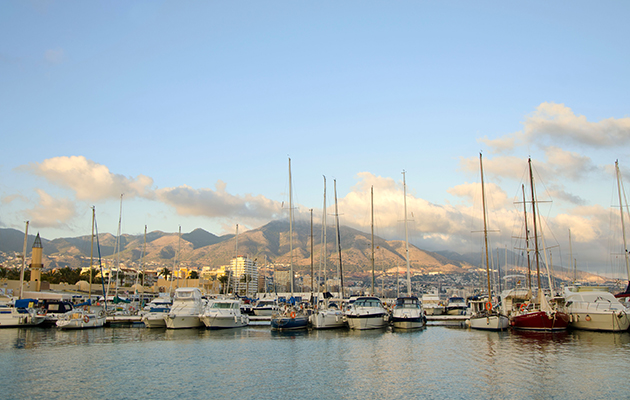There is a strong tidal current. Would you go port or starboard? James Stevens answers your seamanship questions
Should I choose port or starboard?
James Stevens answers your seamanship questions.
Question:
Tom is the owner of High pressurea 10m cruiser racer with a symmetrical spinnaker.
He has been sailing dinghies for years but has just bought his first yacht.
Tom is very experienced with spinnakers in dinghy racing but he doesn’t have the same knowledge when it comes to sailing.
She has three crew members and is currently approaching Les Aiguilles, intending to sail to Cherbourg, which is 60 miles to the south.
The Internet tells Tom that the wind in the Needles is 15 knots at 000º true north. The trip is therefore directly downwind.
Credit: Maxine Heath
Tom knows that when sailing with the spinnaker, the best corrected speed is around 120° to 130° from the true wind direction as measured by the boat’s instruments.
He knows that in gusts he can bear down and sail deeper as the speed increases and the apparent wind changes.
In the current conditions, High Pressure should sail at around 8 knots depending on the sea state.
There is a high tide with tidal currents of over 4 knots on either side of the Channel.
The creek flows west for the next three hours.
Arriving at Les Aiguilles, does he go on starboard or port tack? Does it make a difference?
To respond:
The boat traveling in a tidal current will experience a different wind direction from that recorded by a shore station.
On board, with a tide of four knots to the west, the tidal induced wind will return to around 345° and increase to 15.5 knots.
If there were calm at the shore station, a yacht sailing in this tidal current would experience a westerly wind of four knots.
Continued below…

Crashing waves and hidden rocks have earned some British tidal races a fearsome reputation. Dag Pike explains how to navigate…

Do you know the rules for wearing a blue flag? Do you know who has the right to carry a privilege…

James Stevens answers your seamanship questions – this month, without a working bow thruster, what’s the best way…

For local waters sailors considering a France cruise vacation, Ken Endean looks at the options for making a…
The instruments on the boat measure the wind blowing over the boat, which they call the apparent wind, which includes the tidal element, as well as the course and speed of the boat.
The tidal induced wind changes with the change in strength and direction of the tidal current.
When the current turns east, the tidal induced wind turns, in this case, to about 015° and 15.5 knots.

James Stevens, author of the Yachtmaster Handbook, spent 10 of his 23 years at the RYA as Head of Training and Chief Yachtmaster Examiner
This wind shift makes a big difference to navigation.
When the tidal current is flowing west, heading Tom starboard tack in a wind direction of 345° will be much better for Cherbourg than going port.
Although the tide is on the lee side, it is on the quarter, which will increase the speed of the yacht on the ground pushing it far to the west.
Tom has to watch this and time the jibe to be able to stay at a fast pace all the way to Cherbourg, while making the most of the tide and the shifts in the wind.
A lot depends on how fast Tom is sailing the boat, how deep he is sailing in gusts, the sea state and the concentration of the crew, so it is difficult to predict the course accurately or to predict the exact position of the jibe.
Happy reading Should I choose port or starboard tack?
A subscription to Yachting Monthly magazine costs about 40% less than the cover price.
Print and digital editions are available through Magazines Direct – where you can also find the latest offers.
YM is packed with information to help you get the most out of your time on the water.
-
-
- Take your seamanship to the next level with tips, advice and skills from our experts
- Unbiased in-depth reviews of the latest yachts and equipment
- Cruising guides to help you reach those dream destinations
-
follow us on Facebook, Twitter and Instagram.

